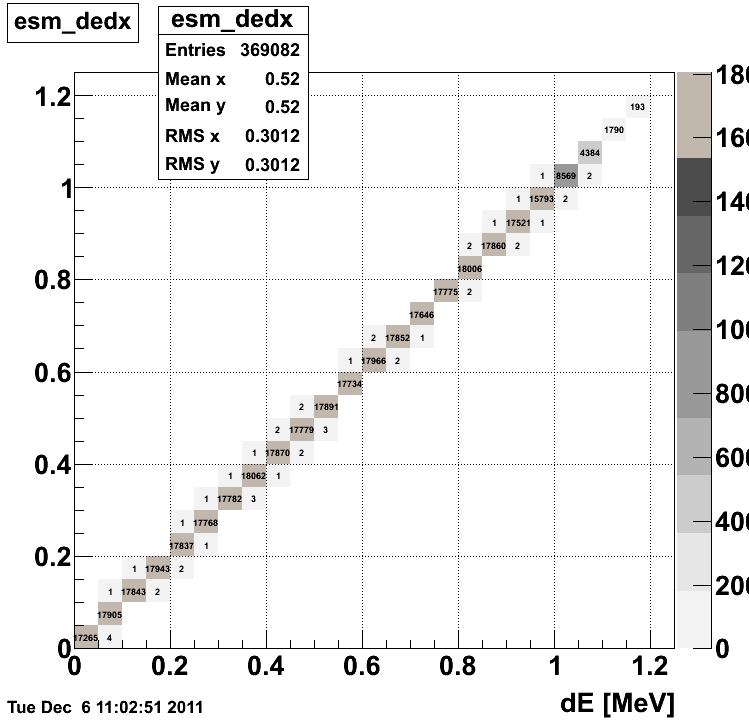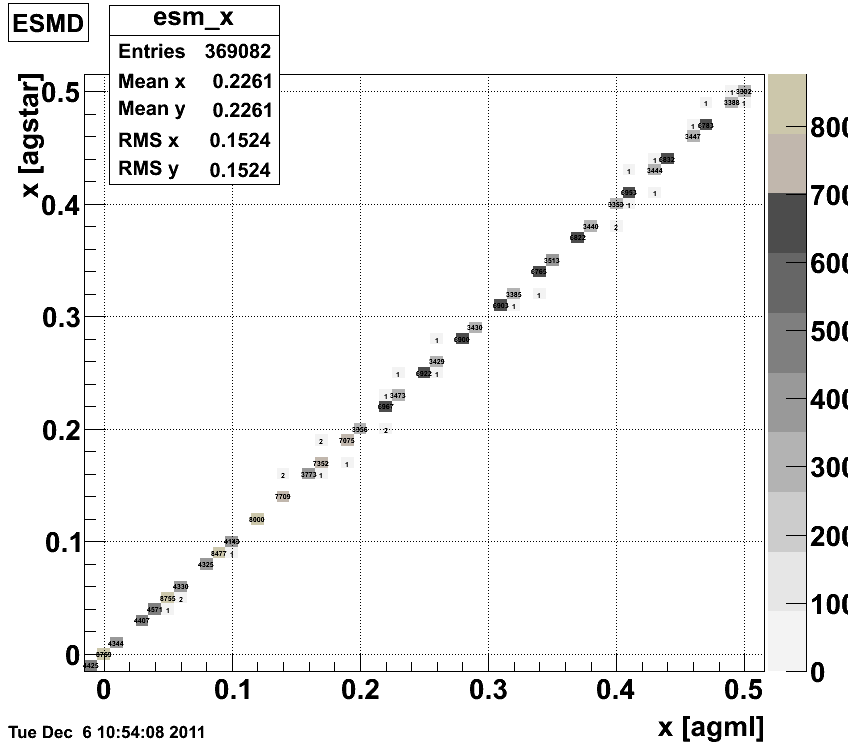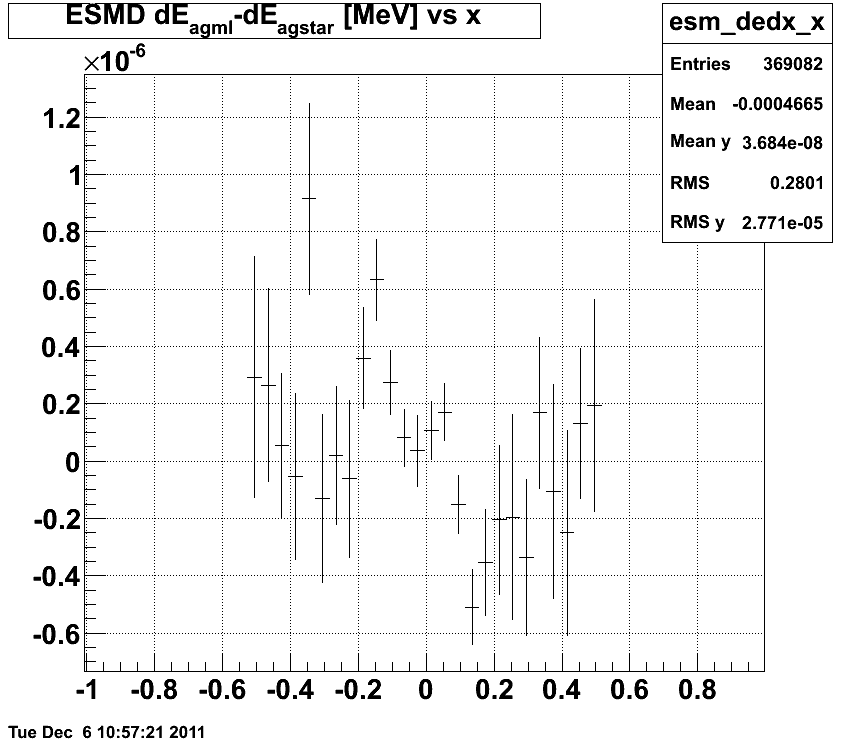- jwebb's home page
- Posts
- 2019
- 2018
- 2017
- 2016
- 2015
- 2014
- 2013
- November (1)
- October (1)
- September (1)
- July (1)
- June (1)
- April (1)
- March (3)
- February (1)
- January (1)
- 2012
- 2011
- December (2)
- September (3)
- August (5)
- July (6)
- June (6)
- May (1)
- April (5)
- March (5)
- February (2)
- January (2)
- 2010
- December (3)
- October (3)
- September (2)
- August (2)
- June (2)
- May (4)
- April (4)
- March (2)
- February (4)
- January (10)
- 2009
- 2008
- 2007
- 2006
- July (1)
- My blog
- Post new blog entry
- All blogs
AgML hits (starsim) vs AgSTAR hits (starsim) in the ESMD
We investigate the discrepancy between AgML and AgSTAR hits in the ESMD.
Figure 1 -- Endcap SMD hit energy. AgSTAR vs AgML geometry. There is a small discrepancy between the two geometries. Single hits, at the rate of ~1/10000, disagree at the level of 10%.

Figure 2 -- Comparison of the hit position along the base of the SMD strip. We compare the position of the hit recorded by AgSTAR to that recorded by AgML along the base of the (triangular) SMD strip. The scale of the axis is in centimeters. The hit positions differ at the ~0.1mm level. The gaps in the plot are due to binning of the data during AgSTAR hit generation.

Figure 3 -- Plot difference in energy deposited in the hit versus step size through the strip and x-position. The difference in energy from hit to hit is < 1.0E-6 MeV.


Conclusions
Approximately 1 in 10,000 hits in the ESMD shows a discrepancy in energy deposit, consistent with a disagreement in the hit position (and the corresponding change in step length) recorded between AgSTAR and AgML. Such positional errors could be caused by slight differences in tracking introduced by syncnotron radiation, which was not turned off during the simulation, or roundoff error in average dE/dx calculations upstream of the SMD position. This does not seem to indicate a major problem with the EEMC geometry in AgML.
- jwebb's blog
- Login or register to post comments
